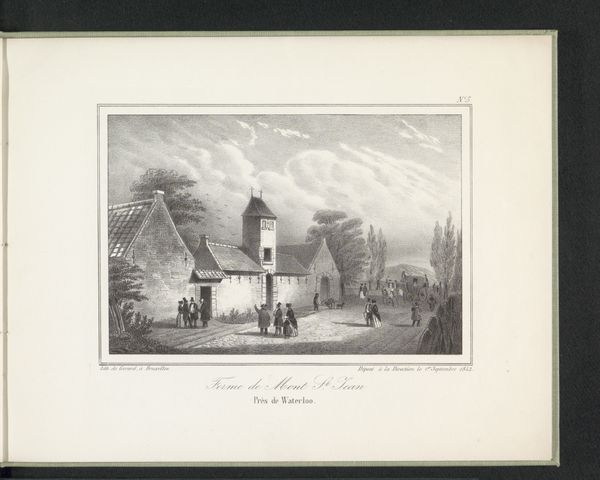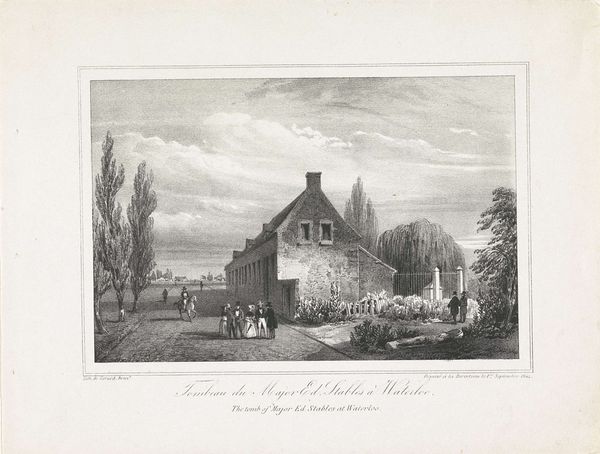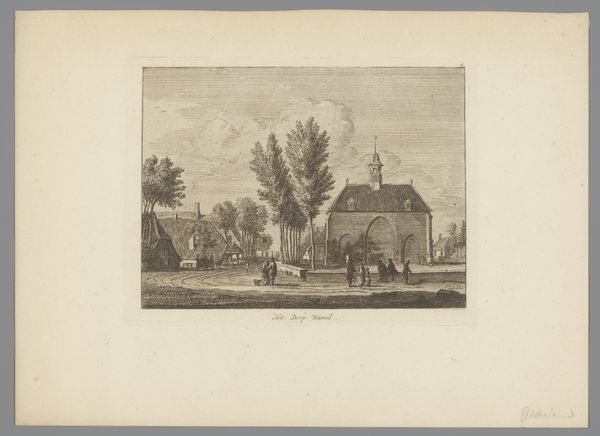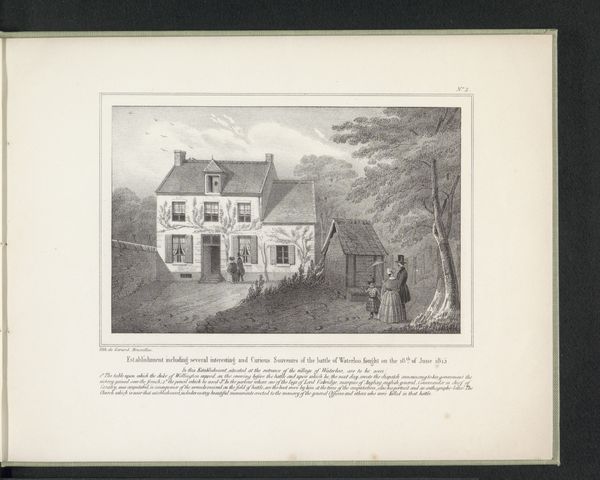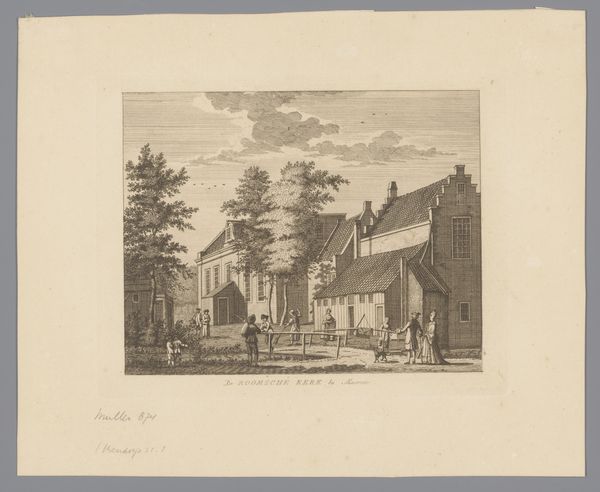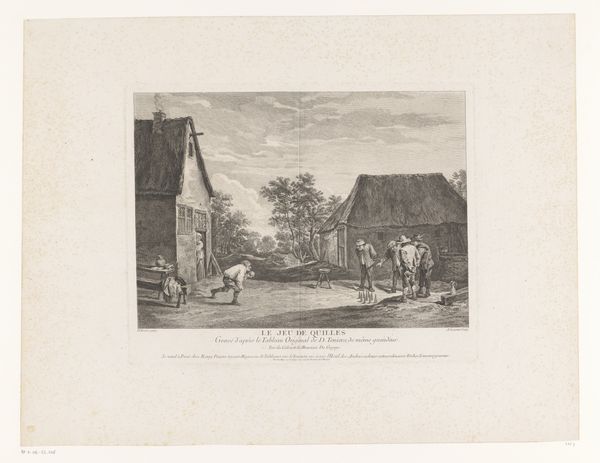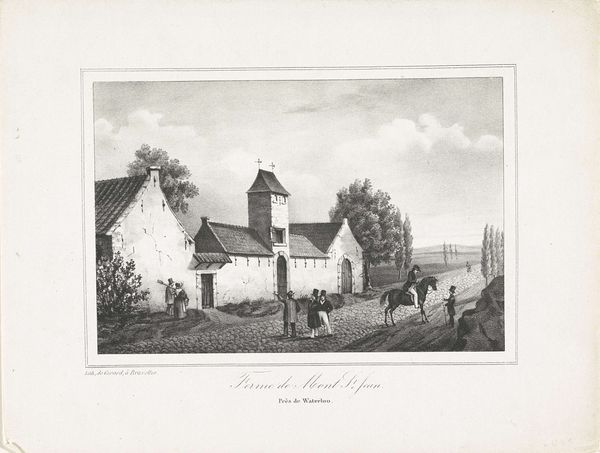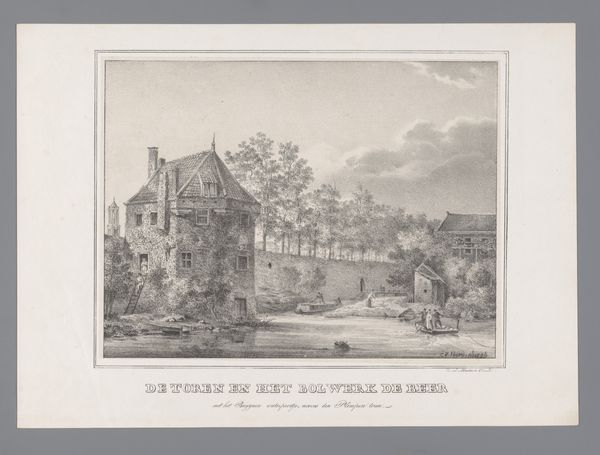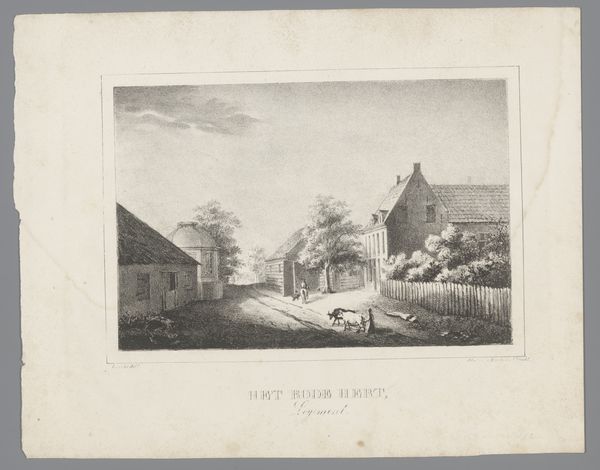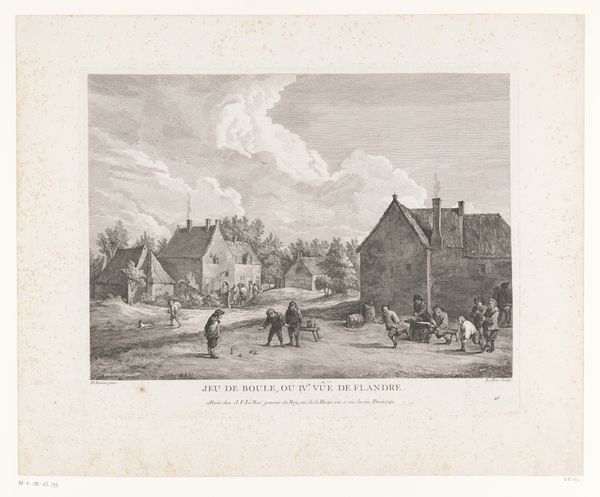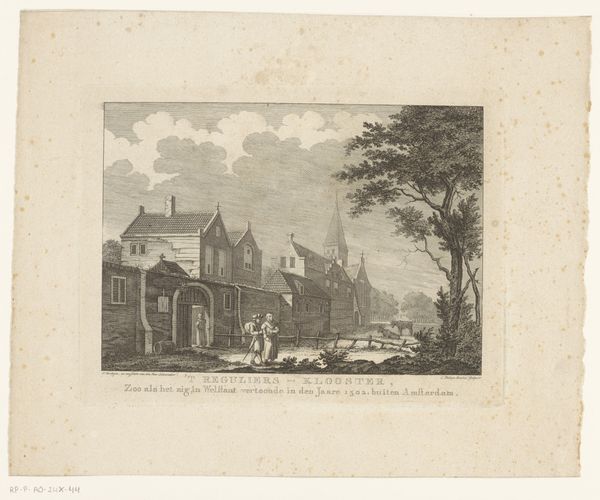
print, engraving
# print
#
landscape
#
romanticism
#
history-painting
#
academic-art
#
engraving
Dimensions: height 225 mm, width 290 mm
Copyright: Rijks Museum: Open Domain
Curator: This engraving, "Grave of Edward Stables at Waterloo", dates to 1842 and is by H. Gérard. The Romantic style depicts the site with figures in period dress. What's your immediate impression? Editor: It evokes a profound sense of quietude, despite depicting a location associated with intense conflict. The greyscale softens everything, creating a reflective atmosphere. Curator: Waterloo is intrinsically linked with Napoleon's defeat, so the choice to focus on a single grave and the surrounding landscape prompts us to consider the individual stories intertwined within grand historical narratives. How do the symbolic aspects operate here? Editor: Note the prominent placement of the tomb juxtaposed against the natural landscape, almost mirroring each other. This elevates death to something universal and inescapable. Curator: Indeed. The academic style emphasizes an objective viewpoint, almost clinical, but the Romantic treatment undermines any truly neutral stance. The figures appear detached, as if merely observing the gravity of the site. They act almost as proxies, reflecting the contemporary viewers grief and loss that follow conflict. It reminds me a little of how gender and warfare often intertwine. Where is the line between grieving the fallen heroes, glorifying national expansionism, and romanticizing male violence. Editor: Interesting point. There's a stillness within the symbols. Trees, traditionally symbols of growth and vitality, are somewhat spare, drawing a stark comparison to the man under the tomb. Even the haystack speaks to our fleeting time. Curator: The title explicitly labels it a grave, shifting it from just another battle-tourism depiction, forcing acknowledgement of sacrifice, especially class divides when thinking about the rank. Editor: The romantic interpretation is clear, isn’t it? The sublime rendering. It asks: what becomes of individuals caught within history’s tides? What markers do we leave? Curator: Exactly. It’s about memory, and the politics of memorialization. Who is remembered and how? Editor: It transcends mere historical document; it operates as a contemplative exploration of mortality within history, both personal and grand. Curator: By interweaving Romantic style with specific historical event, and individual tragedy. H. Gerard achieves the poignant effect, indeed. Editor: Quite moving to bring us here, isn't it? Now, on to the next piece.
Comments
No comments
Be the first to comment and join the conversation on the ultimate creative platform.
